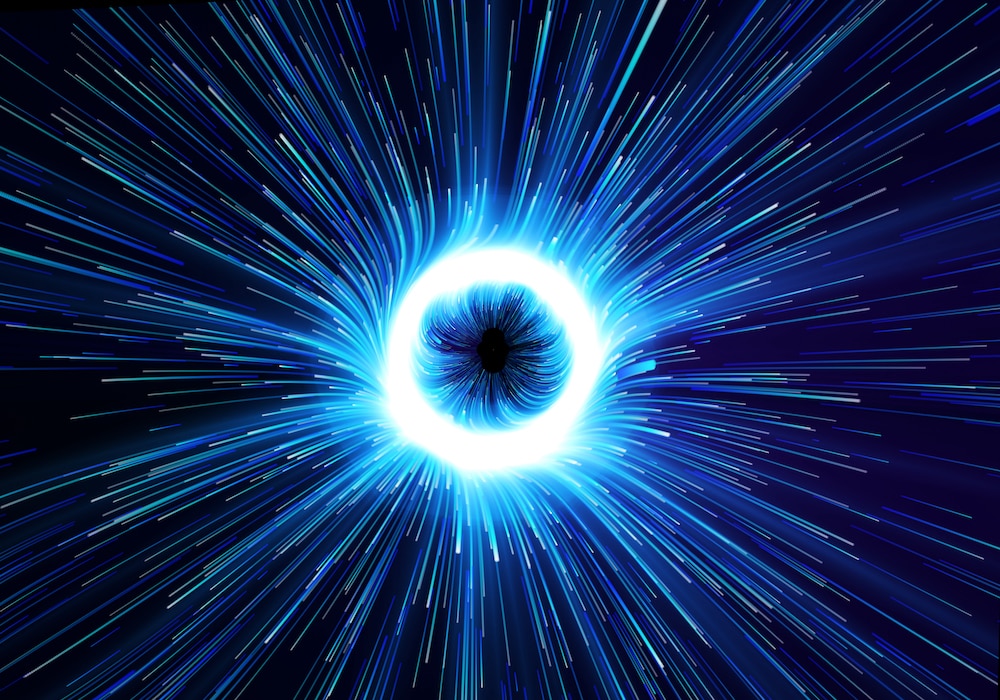Create a free profile to get unlimited access to exclusive videos, sweepstakes, and more!
If you could see a black hole, it might look like a cosmic koosh ball
You might be able to touch a black hole, but you probably don't want to.

Since the discovery of black holes, they have inspired images of the universe’s extremities in both scientists and storytellers. Their immense gravity — sucking in any matter and light unfortunate enough to come within grabbing distance — conjures images of crushing death and infinite possibility.
That same gravity, however, creates a well which consumes indiscriminately and from whence nothing can ever emerge. The only trouble is that isn’t the case. Among Stephen Hawking’s many accomplishments was the discovery that black holes actually radiate very slowly and will eventually evaporate. This discovery, while enough to make Hawking famous, threw a wrench in contemporary astrophysics by creating a paradox.
If a black hole compresses into a singular point at its center and is surrounded by a gravitational event horizon, then the radiation emerging from the horizon is necessarily separate from the matter in the middle. In short, that radiation contains none of the information related to the matter which fell inside. If that’s true, then causality essentially breaks down around a black hole and physicists didn’t like that one bit.
It turns out the paradox might not exist at all. Instead, we might have been wrong about the nature of black holes all this time. Bad news for Hawking, good news for physics. A recent paper by Samir D. Mathur and colleagues at Ohio State University suggests that black holes may not be infinitely compressed points and are instead fuzzy balls of quantum strings. Their findings were published in the Turkish Journal of Physics.
“In the classical picture of a black hole you get a runaway collapse,” Mathur told SYFY WIRE. “All the matter keeps attracting and goes to a point. Around that is vacuum. If you take that picture of a black hole, you get the information paradox that Hawking found and there’s no way to get around it.”
Modeling black holes using string theory shows something different occurs. The team found that matter doesn’t actually shrink to a point. Instead, all of the matter gets puffed up like threads in a ball of yarn and the shape of the black hole actually takes up all of the space inside the event horizon.
“In normal particle physics, particles are point-like. If you pull on a particle it just goes to the center. If, instead of that, you have stretchable objects like rubber bands, most of the energy goes to stretching and you end up getting this big object made of strings and branes. That’s the structure we have found,” Mathur said.
Instead of a singularity inside a vacuum, the fuzz ball picture of black holes gives us something closer to a planet or a star, an object with a surface. In this view, the energy radiating from the event horizon is directly tied to the matter inside the black hole, rather than emerging from the vacuum. Thus, the information paradox is solved. If there’s no vacuum, there’s no information lost.
Mathur compared it to the surface of an atom. An object which is not smooth and is full of quantum variability, depending on the many possible states of the strings and branes.
“Each of those states has to have a different shape. Just like there are many states of a planet, you can have a rock here or a rock there. The details of the structure are what make up the information of the black hole,” Mathur said.
If black holes aren’t singularities inside the vacuum of the event horizon, it might also change what happens to matter that gets sucked inside. In the old picture, matter falls into the horizon and continues in until it meets the singularity in the center and gets crushed. In the new view, it falls onto the surface of the black hole and gets mixed up with the strings which are already there, making the fuzz ball bigger.
“It’s not very different from falling onto the surface of the Earth,” Mathur said. “If a meteorite falls onto the Earth, it gets cracked into pieces and the Earth becomes slightly bigger.”
According to Mathur, the whole experience might be slightly less violent. It’s possible that matter falling into a black hole isn’t totally lost. All objects — whether planets or people — can be described by their internally vibrating frequencies. It could be that when an object falls into a black hole, the fuzz ball begins vibrating at the same frequency.
“In some sense, the object has been stored in the fuzz ball and hasn’t been destroyed,” Mathur said. “We’ve done some models to show it can happen and those models work. But it only shows it can happen, that’s not to say it does happen.”
No matter what the reality of a black hole is, we don’t recommend jumping into one. Your likelihood of survival is low, but this fuzzier view of black holes at least suggests that if you fell in, we might be able to draw a proverbial chalk line around your body.


























